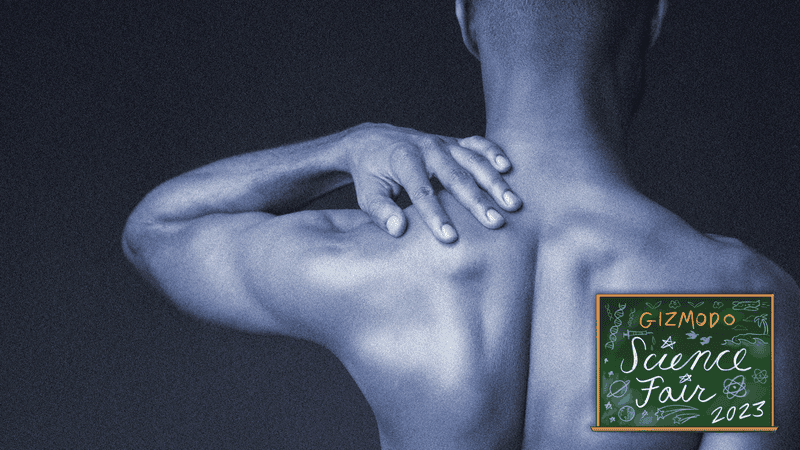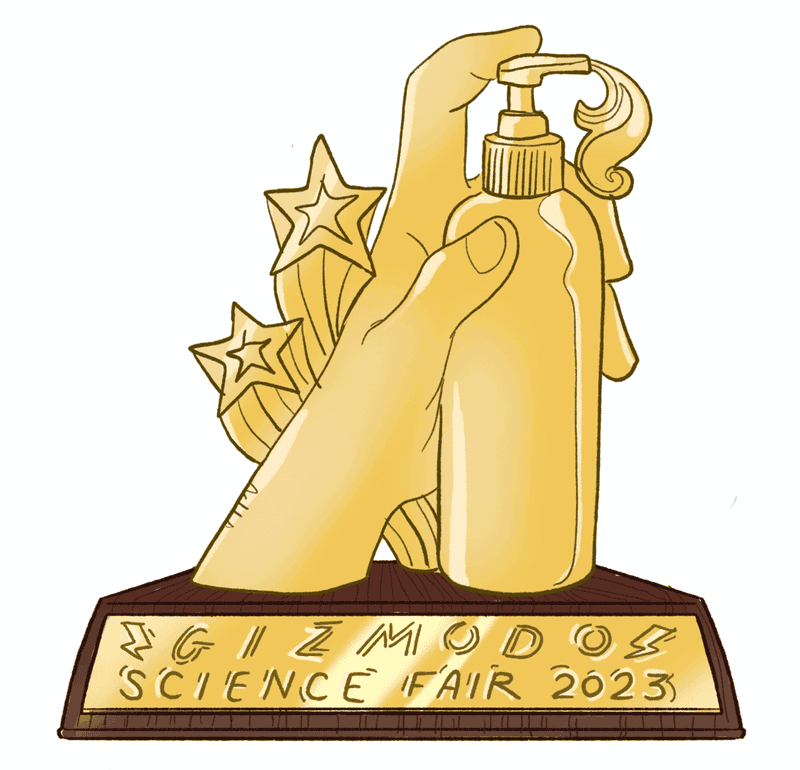A Male Birth Control Gel Is the Field's Most Promising Option in Years

Scientists at the Population Council, the National Institute of Child Health and Human Development, The Lundquist Institute for Biomedical Innovation at Harbor-UCLA Medical Center, and elsewhere are winners of the 2023 Gizmodo Science Fair for developing an innovative male contraceptive gel.
The Question
Is there a safe and reversible way to suppress men’s fertility, similar to the many available birth control methods for women?
Read more
These Winning Close-Up Photos Show Life That's Often Overlooked
Remembering Enterprise: The Test Shuttle That Never Flew to Space
The Results
The gel, applied daily to the shoulders, is a combination of nestorone, a type of progestin hormone, and synthetic testosterone. The nestorone lowers sperm count and natural testosterone levels, both in the testes and in the bloodstream. Unfortunately, low blood testosterone can lead to side effects like decreased sex drive and sexual function. The addition of synthetic testosterone to the gel is meant to keep levels of the hormone stable in men’s blood, hopefully counteracting these effects, while levels in the testes should stay low enough that they remain sterile.
Published studies dating back to 2009 show the NES/T gel appears to be safe and effective at suppressing men’s fertility. But its largest test is happening now, with researchers conducting a Phase IIB trial of around 400 men and their partners. A large interim analysis of the data is expected to be complete in 2023, but the early results already look very promising. Last summer, the researchers reported that 100 couples had completed the study and that the gel seemed to be more effective than the birth control pill and about as effective as long-acting reversible contraceptives for women, which are typically around 99% effective at preventing pregnancy.
Why They Did It
“Men have nothing other than permanent methods and condoms, which have a high failure rate, [for contraception]. So this is really an unmet need that we had to address,” said Regine Sitruk-Ware, one of the project’s lead coordinators and Distinguished Scientist at the Population Council.

“Things have changed a lot since we first started working on this. The men that come into this study really wanted to take up responsibility,” said Christina Wang, principal investigator and researcher at The Lundquist Institute for Biomedical Innovation at Harbor-UCLA Medical Center.
Why They’re a Winner
Surveys have found that both many men and women would be interested in new male contraceptive options. But it’s been a difficult road to develop potential methods.
Some treatments have appeared effective but showed a greater risk of side effects than hoped for. Other drugs, like Risug and Vasagel—non-hormonal shots delivered to the testes—look promising but are languishing in clinical development. Options like hormonal and non-hormonal pills are still in the very early phases of research. The team’s NES/T gel likely won’t be the only male contraceptive available to the public in the near future, but it could very well be the first in a new generation of options.
What’s Next
The researchers plan to present their latest data to the Food and Drug Administration in spring 2023. Given the success they’ve seen so far, they’re hoping that the FDA will allow them to speed up the process and start a Phase III trial earlier than expected. The sooner that happens, and assuming the same positive results, the sooner the gel could reach the public. Another hurdle involves finding pharmaceutical companies willing to fund this continued research and the commercialization of the technology, though Sitruk-Ware says they’re already in talks with several interested partners.
The Team
The NES/T gel project is led by the Population Council, a nonprofit organization that has focused on reproductive health and HIV/AIDS research, particularly in the developing world. It’s also involved collaboration and funding from the National Institute of Child Health and Human Development, as well as research centers like The Lundquist Institute. The Phase IIB trial has relied on the cooperation of researchers and doctors at different study sites across the world, including in Chile, England, Sweden, and the U.S.
See the full list of Gizmodo Science Fair winners
Read more: With a New Gel, the Future of Male Birth Control Looks Bright
More from Gizmodo
Sign up for Gizmodo's Newsletter. For the latest news, Facebook, Twitter and Instagram.

